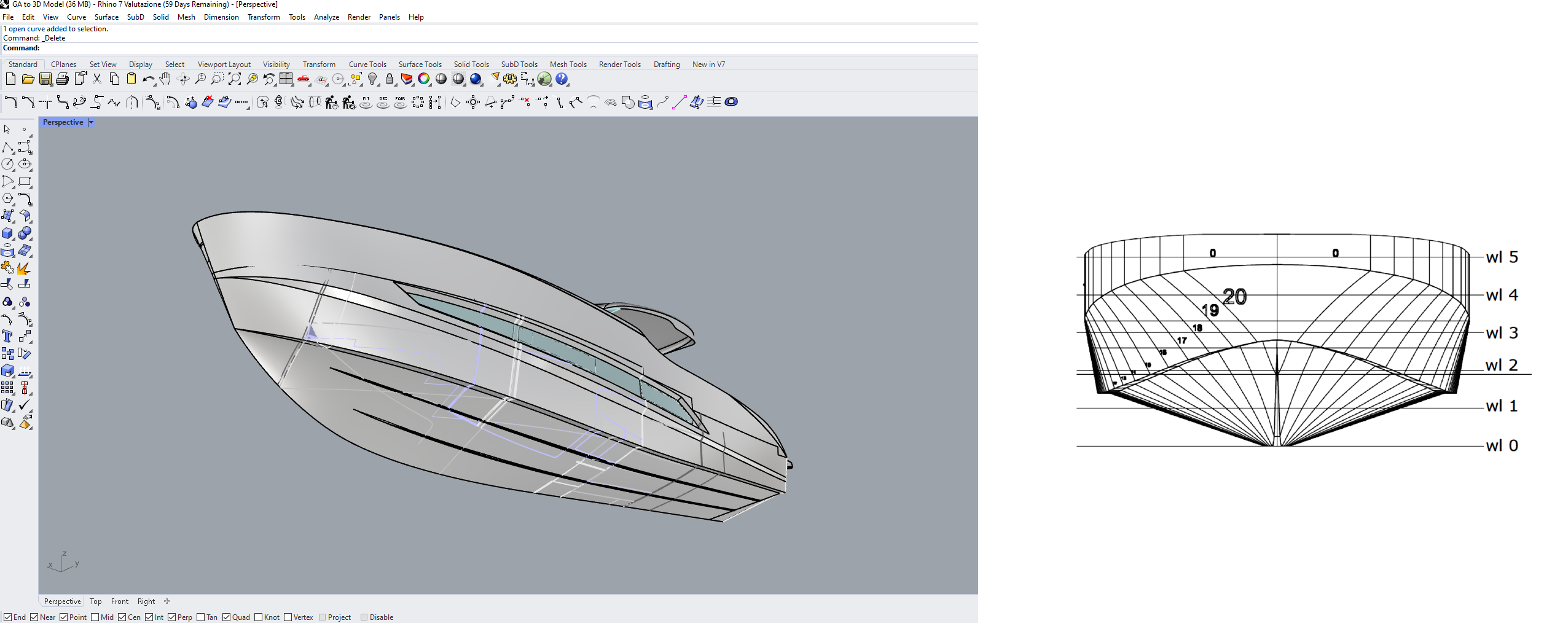
What Is a Planning Hull?
Why powerboat can go so fast except having a powerful engine?
by Yixin
Thu Oct 21 2021
#knowledge
Planning is the mode of operation/cruising for a waterborne craft in which its weight is predominantly supported by hydrodynamic lift, rather than hydrostatic lift (buoyancy), as shown in the picture. When a boat is in planning mode, the bow (front of the boat) is higher relative to the stern (end of the boat). In nautical term, it’s called trimming. There is less surface and volume of the hull emerged in the water at trimming/planning. Therefore, efficiency increases as the hull rises, flattening the wake and reducing form drag. With less hull bottom in contact with the water, frictional drag also decreases. That’s why we usually see powerboat and motorboat under 24 meters with a planning hull. Because planning mode produces less water resistance and thus providing the boat with higher cruising speed or max speed. In order to plane (move on the water surface) a hull at higher speed, hull size, hull shape , design displacement, and the trim are important parameters. Such a planning hull has to climb over its own bow wave. This needs a great deal of power because of variation of angle of attack of the hull relative to the water surface. That’ why we usually see powerboat and motorboat with super powerful engines, either sterndrive, or outboard engine, or IPS. Of course, they consume huge amount of fuel. To initiate planning, the power-to-weight ratio must be high, since the planning mode of operation involves moving the hull at speeds higher than its natural hull speed All boat designs for planning benefit from minimised weight; planning powerboats are commonly made from light alloy or fibre glass or use other reduced-weight construction techniques- RIBs are typical examples. Have a look of the picture , which is a planning hull designed by Yixin for his 45 feet walkaround motorboat project. If you compared this planning hull with a sailing boat hull (a displacement hull), you can easily notice there are some extra lines go through the hull from the transom to the bow. These are called chines. The chine, a sharp change in angle in the cross section of a hull, provides maximum hydrodynamic lift and speed. They are also designed to encourage both ease of planning and stability. How? This is because the hydrodynamic force created at planning mode can have a big perpendicular surface or touch area to lift of the hull, having a chine that facing to the water helps water to push the boat straight upward. It worth mentioning that the shape of chine also helps to expel the spray outward instead of letting the spray and wave go directly upward to the deck. For a boat around 50 feet, we usually see one main chine and 2-3 smaller chins under the main chines. They are have same functions. That’s all about planning hull. Hope you like it. I also found this video on Youtube explain very well the difference between displacement hull and planning hull: https://www.youtube.com/watch?v=i65mI8jA96w See you next time~ Yixin